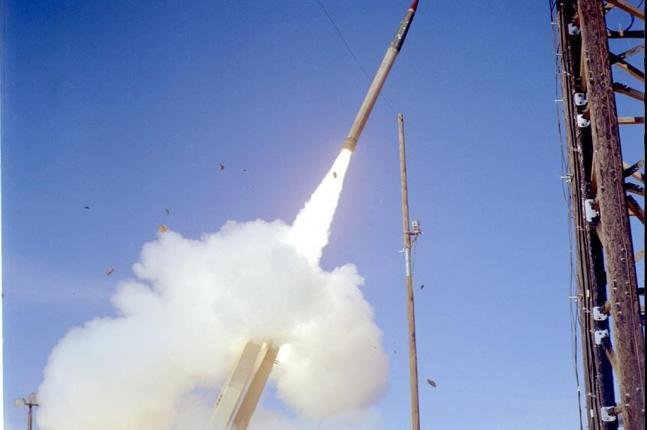The U.S. missile defense system THAAD, or Terminal High Altitude Area Defense system, may not always be able to deter against a North Korea attack, analysts said Wednesday. Courtesy of U.S. Department of Defense
SEOUL, June 24 (UPI) -- Controversy is growing over the possibility of THAAD deployment on the Korean peninsula, as analysts spar over its effectiveness as a North Korea missile deterrent.
MIT physicist Theodore Postol and his Cornell colleague George Lewis told South Korean newspaper Hankyoreh on Wednesday that THAAD, or Terminal High Altitude Area Defense, is a Ground-Based Midcourse Defense system that comes with limitations.
Postol and Lewis said THAAD could serve as a deterrent against North Korea's Scud B and C missiles that can travel between 186 and 373 miles. THAAD also can be used against the No-Dong surface-to-air missile that can travel as far as 621 miles.
The issue, however, is the unpredictable trajectory of North Korea missiles.
Scud B and C missiles sometimes spin or spiral through space before falling to the ground. It would be difficult to take down these weapons through the deployment of THAAD, according to the two analysts.
North Korea's No-Dong surface-to-air missile is also a challenge to intercept, said Postol and Lewis, because it is hard for THAAD to distinguish between the warhead and the missile body when it is traveling through the air at high speeds.
A THAAD system could shoot down the missile body at a critical moment, but that leaves the warhead to fall to the ground in an explosion that the anti-missile system is designed to prevent.
Those observations, however, were not discussed during a forum on South Korea security policy held in Seoul on Wednesday.
Yonhap reported U.S. and Chinese approaches to THAAD deployment on the Korean peninsula differed remarkably during the panel.
Bruce Klingner, a senior research fellow for Northeast Asia at the Heritage Foundation, said South Korea should deploy THAAD in order to defend against North Korea's nuclear threat. Kim Kangil, a researcher at China's Yanbian University disagreed, and said the system was a U.S. way to keep China in check, and that Washington was using the U.S.-South Korea alliance as a stepping stone to expand its influence in the Asia-Pacific.















